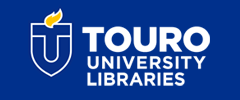NYMC Faculty Publications
Fanconi Anemia and mTOR Pathways Functionally Interact During Stalled Replication Fork Recovery
Author Type(s)
Faculty
DOI
10.1002/1873-3468.14035
Journal Title
FEBS Letters
First Page
595
Last Page
603
Document Type
Article
Publication Date
3-2021
Department
Cell Biology and Anatomy
Keywords
Aphidicolin, Cell Survival, DNA, DNA Repair, DNA Replication, Fanconi Anemia, Fanconi Anemia Complementation Group D2 Protein, Fibroblasts, Genome, Human, Genomic Instability, Humans, Hydroxyurea, Mitomycin, Primary Cell Culture, Protein Binding, Signal Transduction, Sirolimus, TOR Serine-Threonine Kinases
Disciplines
Medicine and Health Sciences
Abstract
We have previously demonstrated that Fanconi anemia (FA) proteins work in concert with other FA and non-FA proteins to mediate stalled replication fork restart. Previous studies suggest a connection between the FA protein FANCD2 and the non-FA protein mechanistic target of rapamycin (mTOR). A recent study showed that mTOR is involved in actin-dependent DNA replication fork restart, suggesting possible roles in the FA DNA repair pathway. In this study, we demonstrate that during replication stress mTOR interacts and cooperates with FANCD2 to provide cellular stability, mediate stalled replication fork restart, and prevent nucleolytic degradation of the nascent DNA strands. Taken together, this study unravels a novel functional cross-talk between two important mechanisms: mTOR and FA DNA repair pathways that ensure genomic stability.
Recommended Citation
Nolan, M., Knudson, K., Holz, M. K., & Chaudhury, I. (2021). Fanconi Anemia and mTOR Pathways Functionally Interact During Stalled Replication Fork Recovery. FEBS Letters, 595 (5), 595-603. https://doi.org/10.1002/1873-3468.14035


